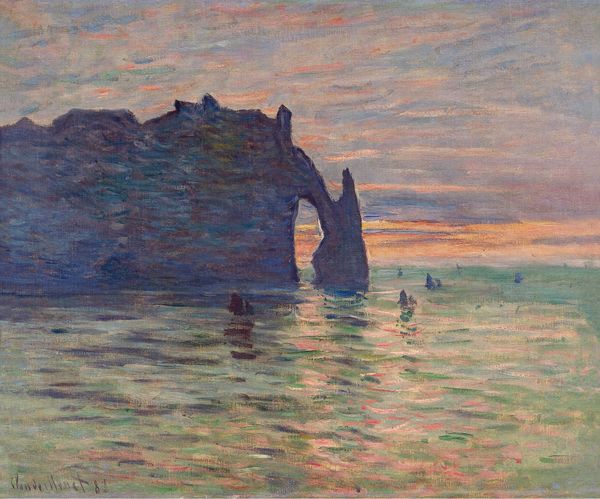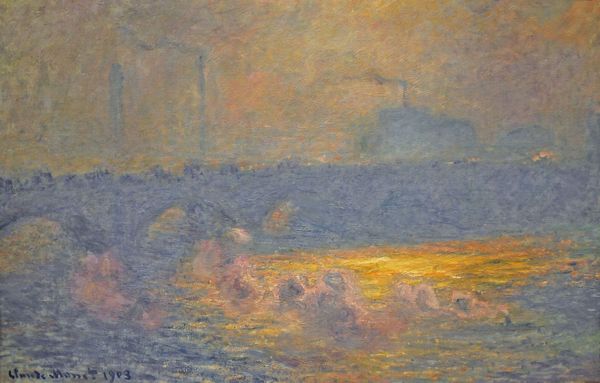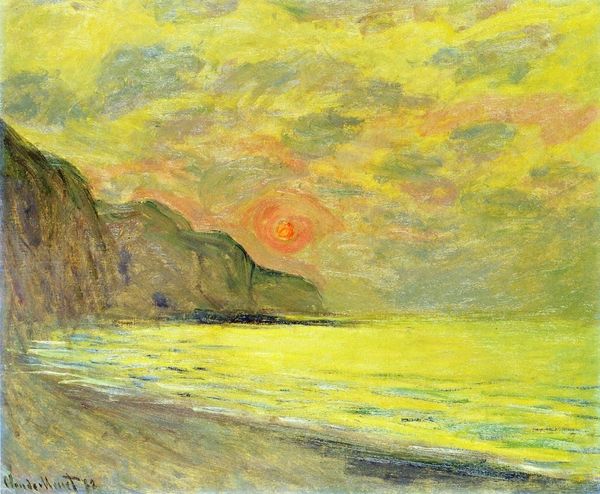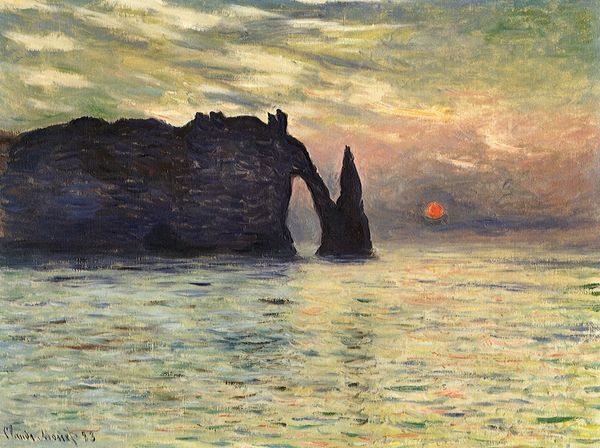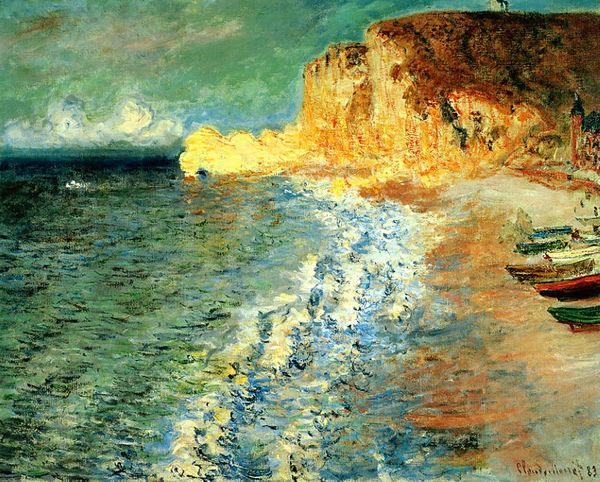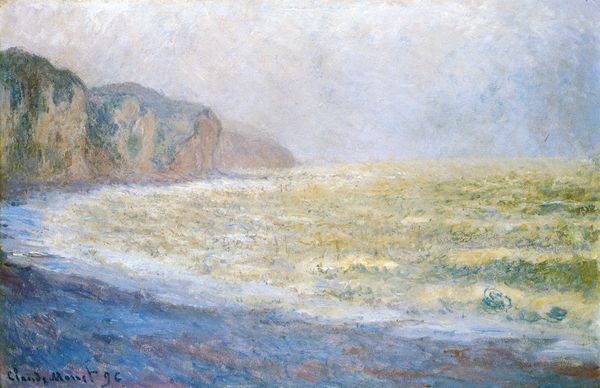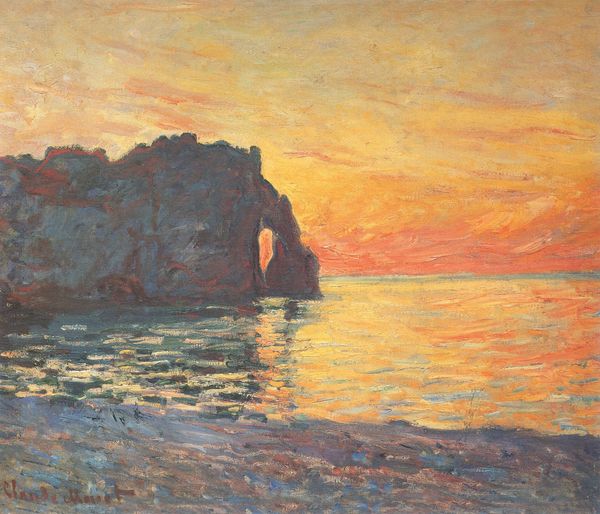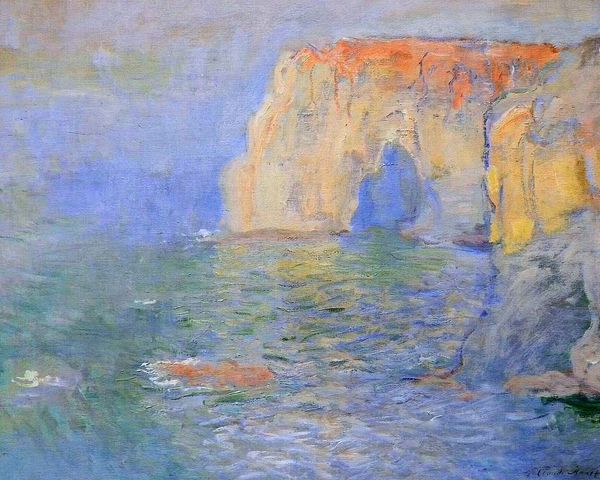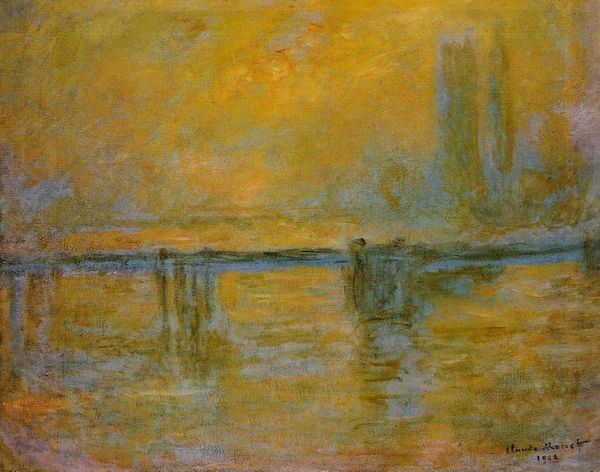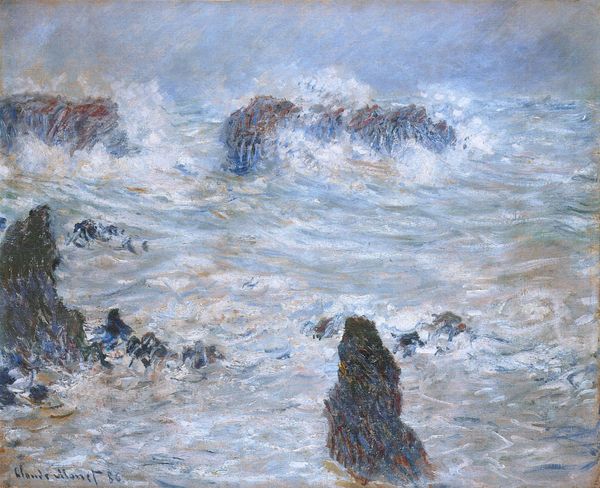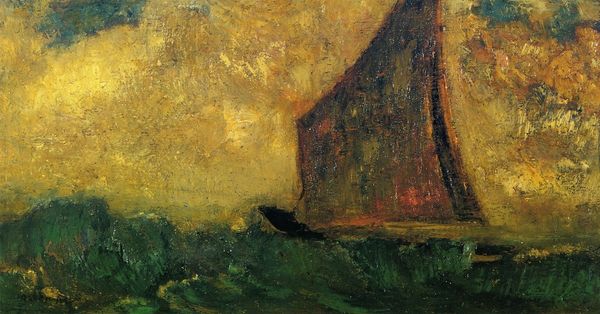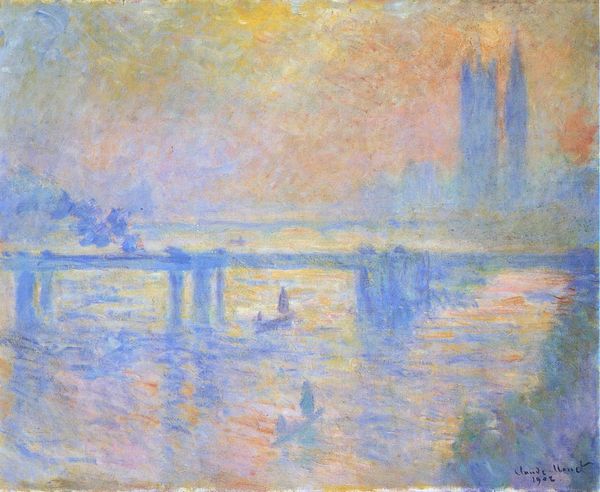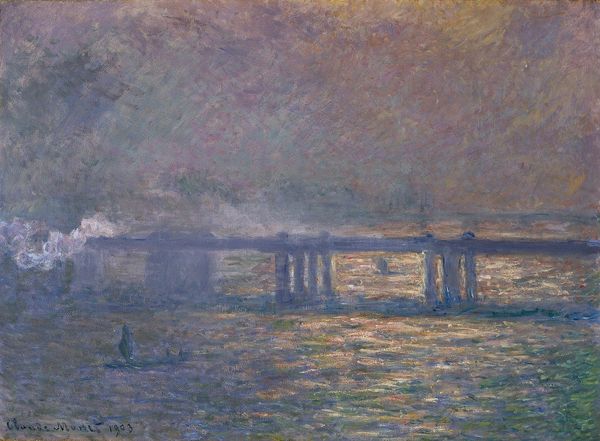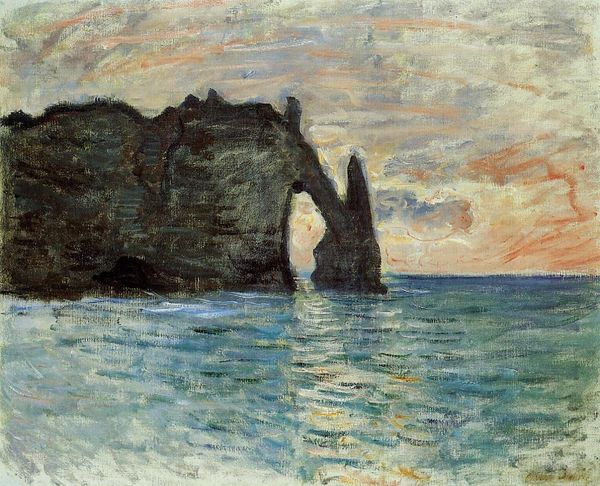
painting, plein-air, oil-paint
#
cliff
#
painting
#
impressionism
#
impressionist painting style
#
plein-air
#
oil-paint
#
landscape
#
impressionist landscape
#
oil painting
#
rock
#
cityscape
Dimensions: 81 x 66 cm
Copyright: Public domain
Curator: "The Cliffs at Étretat," painted by Claude Monet in 1886. You can find it displayed at the Pushkin Museum in Moscow. Editor: The colors feel otherworldly—that luminous golden sky meeting the churning green sea. It's both calming and dramatic. Curator: Indeed. The cliffs themselves, especially that famous arch, carry a certain symbolic weight, don't they? They’ve been a recurring motif in art, literature, even photography. Think of the "sublime" and humanity's relationship to nature’s power. Editor: And consider how Monet was capturing not just the place, but a moment. That obsession with light. Did this area become something of a retreat for artists responding to growing industrialization, looking to capture its disappearing features? Curator: Precisely. These locations gained prestige by attracting cultural elites and being integrated into painting; one validates the other. Editor: Monet’s distinct brushstrokes contribute to the feeling of constant motion. The way he uses color, light, and shadow seems more important than objective geological precision. How does this compare to, say, earlier landscape traditions in painting? Curator: Before Impressionism, landscapes often served as a backdrop. With Monet, landscape becomes the subject—a mirror reflecting psychological experiences back to the viewer. The water, those formations – it is very nearly a Rorschach. Editor: So we move away from idealizing nature to really internalizing the sensation of confronting it, filtered through subjective human vision and artistic innovation. Fascinating to see how Monet's vision shaped our continued romantic and nostalgic perception of that location. Curator: It prompts questions about seeing itself. Does art imitate life or does life begin to imitate art? I suspect the question might still have merit! Editor: Monet captures a moment and inadvertently captures something more – the ongoing process by which places are rendered into ideas. A good thing to think about as we view this image.
Comments
No comments
Be the first to comment and join the conversation on the ultimate creative platform.
